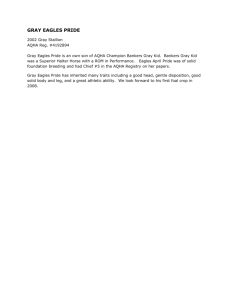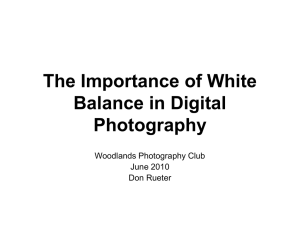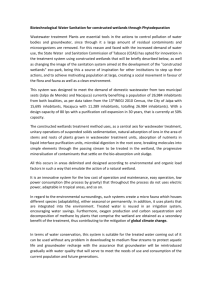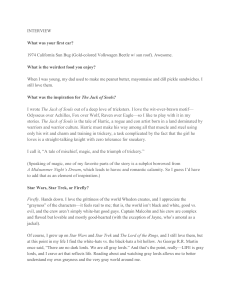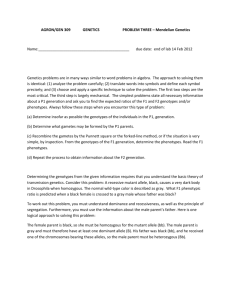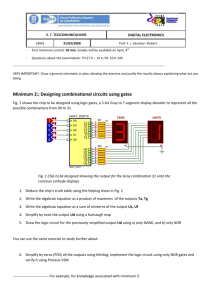OCF gray water recycling system
advertisement
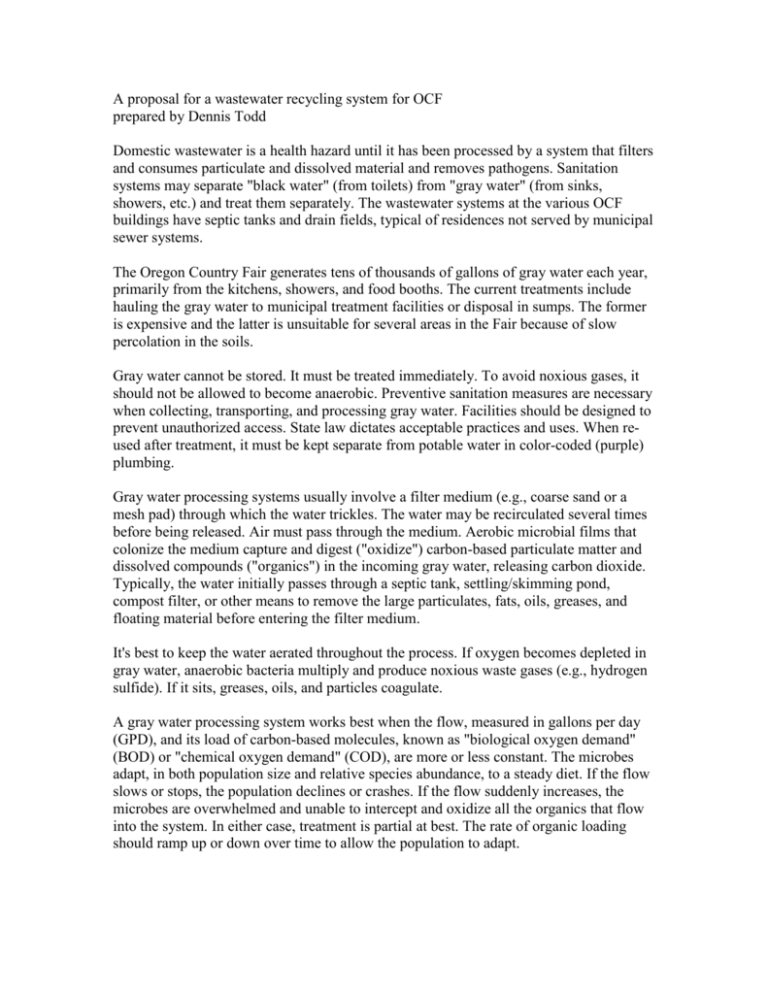
A proposal for a wastewater recycling system for OCF prepared by Dennis Todd Domestic wastewater is a health hazard until it has been processed by a system that filters and consumes particulate and dissolved material and removes pathogens. Sanitation systems may separate "black water" (from toilets) from "gray water" (from sinks, showers, etc.) and treat them separately. The wastewater systems at the various OCF buildings have septic tanks and drain fields, typical of residences not served by municipal sewer systems. The Oregon Country Fair generates tens of thousands of gallons of gray water each year, primarily from the kitchens, showers, and food booths. The current treatments include hauling the gray water to municipal treatment facilities or disposal in sumps. The former is expensive and the latter is unsuitable for several areas in the Fair because of slow percolation in the soils. Gray water cannot be stored. It must be treated immediately. To avoid noxious gases, it should not be allowed to become anaerobic. Preventive sanitation measures are necessary when collecting, transporting, and processing gray water. Facilities should be designed to prevent unauthorized access. State law dictates acceptable practices and uses. When reused after treatment, it must be kept separate from potable water in color-coded (purple) plumbing. Gray water processing systems usually involve a filter medium (e.g., coarse sand or a mesh pad) through which the water trickles. The water may be recirculated several times before being released. Air must pass through the medium. Aerobic microbial films that colonize the medium capture and digest ("oxidize") carbon-based particulate matter and dissolved compounds ("organics") in the incoming gray water, releasing carbon dioxide. Typically, the water initially passes through a septic tank, settling/skimming pond, compost filter, or other means to remove the large particulates, fats, oils, greases, and floating material before entering the filter medium. It's best to keep the water aerated throughout the process. If oxygen becomes depleted in gray water, anaerobic bacteria multiply and produce noxious waste gases (e.g., hydrogen sulfide). If it sits, greases, oils, and particles coagulate. A gray water processing system works best when the flow, measured in gallons per day (GPD), and its load of carbon-based molecules, known as "biological oxygen demand" (BOD) or "chemical oxygen demand" (COD), are more or less constant. The microbes adapt, in both population size and relative species abundance, to a steady diet. If the flow slows or stops, the population declines or crashes. If the flow suddenly increases, the microbes are overwhelmed and unable to intercept and oxidize all the organics that flow into the system. In either case, treatment is partial at best. The rate of organic loading should ramp up or down over time to allow the population to adapt. This dosing problem poses challenges for OCF with our highly seasonal use of water. But appropriate management practices may accommodate the limitations of the system. If the gray water system is integrated with the community center/upland kitchen and the kitchen is in use year-round, the microbes will be maintained continuously. When the kitchen starts preparing food in the months before the event, the GPD and BOD will gradually increase, allowing the microbial population to ramp up as well. During the event, gray water collected from food booths, hand washing stations, showers, and other sources could present an overwhelming load to the system unless it is pretreated to remove much of the BOD. Mycofiltration could provide the pretreatment. The mycofilter material should be prepared, inoculated, and cultured in the spring so that the mycelium fully colonizes the medium just before the peak gray water load is applied. The fungi should be growing as rapidly as possible when the surge hits. At the end of the season, the material can continue composting until it is used as a mulch on non-food plantings. The mycofilter building should have a roof, a watertight floor, a drainage collection system, and a floor plan that allows the use of a tractor to move the material. For redundancy and flexibility, two or three separate mycofilter chambers would be better than one. Tanker trucks would direct their discharge into the mycofilter chambers, either directly or through a pipe from another location. The chambers could be sized to accommodate a full truck load with a filtering rate that allowed the chamber to drain before the next truck unloaded. The mycofilter material should be allowed to drain fully to avoid suffocating the fungi. After flowing through the mycofilter, and being mostly stripped of particulates, oils, and greases, the water could be directed to a lined holding pond or an aerated surge tank that would even out the flow when tanker trucks dump their loads. A controlled dosing pump would transfer the water into the gray water treatment system. Even though the GPD would be high, the relatively low BOD of the pre-treated water could prevent overloading the microbes. Recirculation pumps in the gray water system should be sized for peak flow but capable of reduced flow in the off-season. The gray water system could be something as simple and time-tested as a sand filter, as visible as a vertical-flow constructed wetland, as high-tech as the Orenco system, or some idiosyncratic invention in between. A sand filter or treatment wetland would disperse the treated water into the groundwater. A recirculating system could allow recapture and reuse and would require a collection and pumping system with a dedicated (and colorcoded) distribution system. The Hub would be the best site for a gray water processing system. It is LUMP-zoned to remain an industrial area and will be the service access side of the proposed community center. An inclined treatment and collection facility could be built above the flood line on the slope above Marshall's Landing. Discharge through a sand filter or constructed wetlands on the Hub slope would minimize the risk of nitrate contamination of the ground water; the soils in Marshall's Landing are relatively impermeable and would direct the subsurface treated wastewater into the root zone of the vegetation in the old Indian Creek channel. Underground plumbing can carry process water between locations. Trenching in forested areas should be avoided as much as possible because trenching kills tree roots. The nonforested areas of Alice's are the best sites for a leach field but subsurface discharge there poses the risk of groundwater contamination with nitrates. Questions: Re-use: Should we re-use the treated water for irrigation? For toilet flushing? Are there other possible beneficial uses? Does the value of re-used water exceed the cost of installation of a distribution system? Nitrate: Should we treat our black water by sending it through a septic tank and drain field, at the risk of adding more nitrate contamination to the ground water? Or should we build a system that reduces nitrates before the water is released? Or discharge the treated water into an area underlain by low-permeability strata so that it flows (subsurface) to the river? Methane: Should we try to avoid methane gas emissions by keeping the entire process aerobic (e.g., no septic tanks)? Upkeep and maintenance: How important is it to minimize trucking of effluent (both treated and untreated)? How important is it to minimize the use of electricity? How much labor will be required for maintenance and operation? What level of skill or knowledge is required for maintenance and operation? Initial investment: How much land area would the system occupy? What would the construction costs be? What environmental and archaeological impacts could there be? Education: Should the system be visible to people who come to the community center? Resources: Brix, Hans, and Carlos A. Arias. 2005. The use of vertical flow constructed wetlands for on-site treatment of domestic wastewater: New Danish guidelines. Ecological Engineering 25 (2005) 491–500. UN-HABITAT, 2008. Constructed Wetlands Manual. UN-HABITAT Water for Asian Cities Programme Nepal, Kathmandu. Sustainable Sanitation and Water Management. (no date) Vertical Flow Constructed Wetlands. http://www.sswm.info/category/implementation-tools/wastewatertreatment/hardware/semi-centralised-wastewater-treatments/v (includes links to descriptions of compost filters, settling tanks, and other components) Fuchs , Valerie J. 2010. Nitrogen removal and sustainability of vertical flow constructed wetlands for small scale wastewater treatment: Recommendations for improvements. Water Environment Research Foundation. http://ndwrcdp.werf.org/documents/DEC12U06/DEC12U06.pdf Austin, David ; Eric Lohan, and Elizabeth Verson. 2003. Nitrification and denitrification in a tidal vertical flow wetland pilot. Proceedings of the Water Environment Technical Conference. http://www.livingmachines.com/Services/Publications/ResearchPublications/AustinWEFTEC2003.aspx

